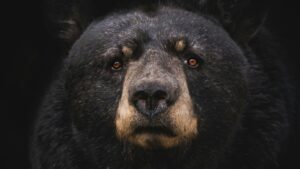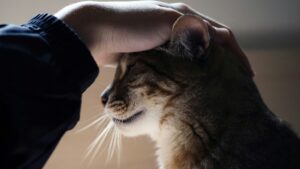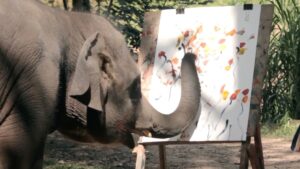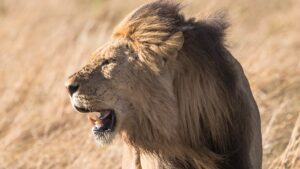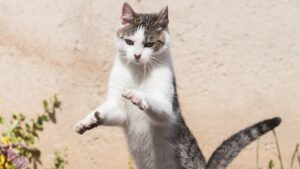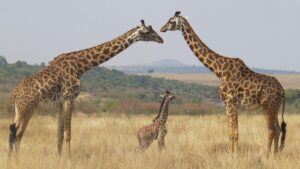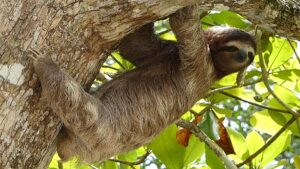Imagine walking down a bustling city street, skyscrapers towering above, when suddenly, you spot a furry figure rummaging through a nearby dumpster. No, it’s not a stray dog or a giant raccoon – it’s a bear! As surprising as it may sound, this scenario is becoming increasingly common in urban areas around the world. Check out the fascinating and somewhat secret lives of city bears, exploring how these majestic creatures adapt to urban environments, their unique diets and behaviors, and their complex interactions with us humans.
Bears in the backyard: How and why they’re moving into the neighborhood
Bears are traditionally thought of as creatures of the wilderness, roaming vast forests and mountain ranges. However, as human populations expand and natural habitats shrink, bears are venturing into urban areas in search of food and shelter, as detailed by National Geographic. This migration poses significant challenges for bears as they navigate the concrete jungle, but these adaptable animals have shown remarkable resilience and ingenuity in making city life work for them.
Dumpster diving: The urban bear diet

In the wild, bears have a varied diet that includes berries, nuts, insects, and occasionally fish or small mammals. Urban bears, however, have developed a taste for something a little different — our trash. City bears have become adept at scavenging through garbage bins and dumpsters to find food. While this might seem like an easy meal solution, it’s not without its problems. Human food is often less nutritious and can lead to health issues for bears. Moreover, this dumpster dining habit increases the likelihood of bear-human encounters, which can be dangerous for both parties.
Nighttime wanderers: Behavioral adaptations of city bears
To minimize contact with humans, many urban bears have become nocturnal, venturing out at night to forage for food. This shift in behavior is a testament to the bear’s ability to adapt to new environments. However, it also means that they are more likely to go unnoticed and unmonitored, making it difficult for wildlife officials to manage and protect them effectively.
Close encounters of the bear kind: Human-bear interactions
As bears become more common in urban settings, interactions between bears and humans are on the rise. While most of these encounters are harmless, they can sometimes lead to dangerous situations. It’s important for city dwellers to understand how to coexist with these new neighbors. Simple steps like securing garbage cans, avoiding feeding bears, and staying calm during an encounter can go a long way in preventing conflicts.
The urban bear dilemma: Conservation and management challenges
The presence of bears in cities poses unique challenges for wildlife conservation and management. Traditional conservation strategies focused on preserving natural habitats may not be sufficient for urban bears. Wildlife officials are now tasked with finding innovative solutions to manage bear populations in cities, ensuring their safety and the safety of human residents. This includes public education campaigns, research on urban bear behavior, and developing policies that promote coexistence.
Learning to live together: Coexistence strategies
Living alongside bears in urban environments requires a collective effort from both wildlife authorities and city residents. Educating the public about bear behavior, implementing bear-proof waste management systems, and creating green corridors that allow bears to move safely across urban landscapes are some of the strategies being employed to promote peaceful coexistence.
City bears: Urban ecosystems evolving
As urban areas continue to expand, the interaction between wildlife and humans will become an increasingly important aspect of city living. Understanding and adapting to the presence of bears and other wildlife is crucial for creating sustainable urban ecosystems. Research into the behavior and needs of urban bears will play a vital role in this process, helping us to devise better ways to live in harmony with these magnificent creatures.
The secret lives of city bears offer a unique glimpse into the adaptability and resilience of wildlife in the face of human expansion. By understanding and respecting these urban dwellers, we can find ways to coexist peacefully, ensuring a healthy and balanced urban ecosystem. As we continue to share our cities with bears and other wildlife, it’s essential to remember that we are all part of the same community, each playing a role in maintaining the delicate balance of urban nature.
RELATED: Mother Gorilla Bonds With Human Baby, Then Shows Her Own Child
Header image: Black bear face / Marc-Olivier Jodoin via Unsplash
I’m Mark Putzer, and my passion for animals and all things nature is a life-long love affair. Growing up in Wisconsin, I had many cherished memories of hiking, skiing, and enjoying the abundant wildlife in the Badger State.
My passion for animals led me to marine biology research for my studies at the University of Wisconsin. I researched the behavior and communication of humpback whales around Hawaii and Orca Whales around the San Juan Islands of Washington State. The experience of being close to these massive and magnificent creatures is amazing. Later, I taught outdoor education to children in California — passing along my knowledge of animals and nature to the curious minds of the next generation. I also love pets. This includes a Labrador Retriever dog named “Molly” when I was a kid — and now, an adventurous tabby cat named “Rosy.”
I’m here to share the wonders of the animal kingdom with you. Whether it’s a cherished pet at home or an animal out in the wild, there are many unique stories and interesting information to share on Weird Animal News! Enjoy!



